How I discovered the fascinating history of my house
10+ minute read
By The Findmypast Team | January 11, 2021

For those of us who work at Findmypast, exploring our heritage is so much more than a job, it's our passion. Here, Angie shares how she found the amazing history of her house.
Have you ever wondered about who lived in your house before you? Have you heard creaking floorboards late at night and thought about the feet that trod them? When you weed the flower bed do you consider who planted the garden, or what secrets might be buried beneath the soil?
Older homes come with character and their own quirks and eccentricities, and sometimes their previous occupants have fascinating stories to share.
If you want to research the history of your house, here's how to get started, and how to go further with expert advice from house historian Melanie Backe-Hansen.
Finding the history of my house
To celebrate 30 years in our family home I wanted to see if I could uncover anything exciting about the building or its former residents. My parents worked hard to make it our home for the last 3 decades and it holds a lot of special memories for my family. I was curious about what happened during the house’s 90-year history before we moved in.
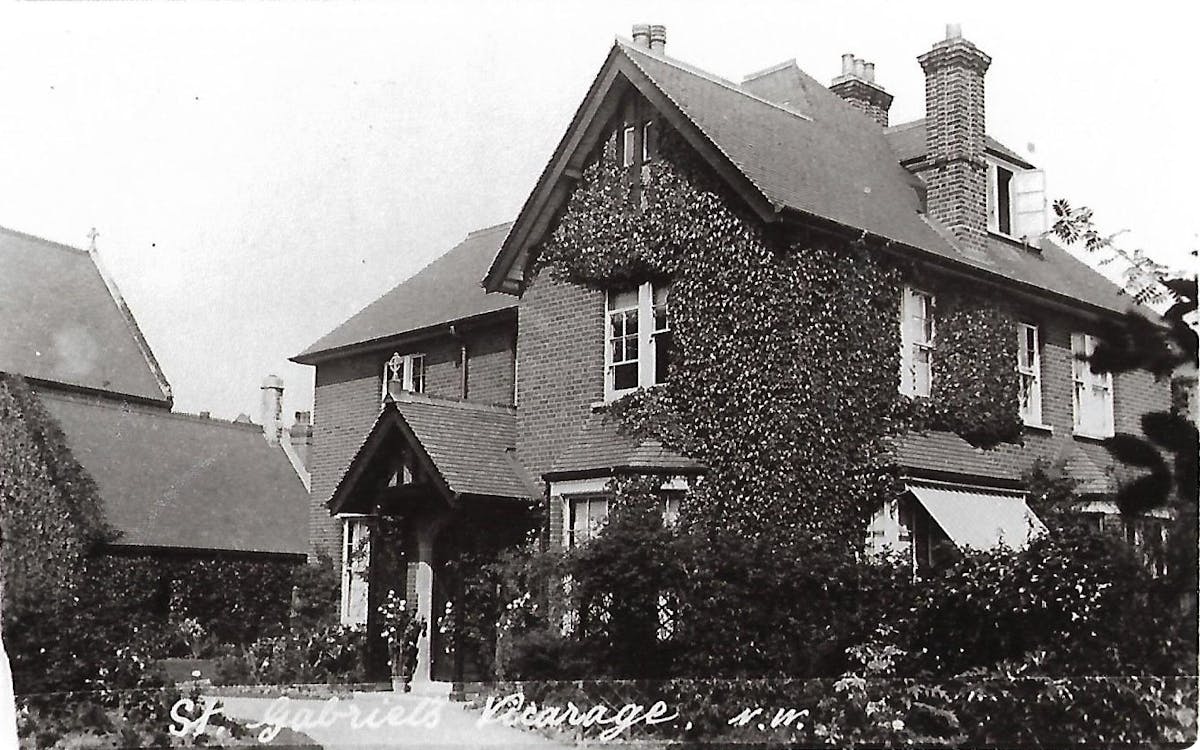
My family home, a former vicarage.
All we share is an address but through my research, I have discovered fascinating stories about the people who lived there before me. I’m still trying to connect the final pieces but so far I have discovered a tragic accident, a serial complainer, and I've even frightened my family with the possibility of a grave in our garden!
House history for beginners
Being a beginner at researching the history of a building, I wasn’t really sure how to get started. Taking a family history research approach, I decided that writing down what I already knew was a good first step.
Step 1: What do I know about the history of my house?
I noted:
- the street address and postcode
- That it's a former vicarage of St Gabriel’s Church
- That it was built in the late Victorian/early Edwardian era (circa. 1900)
I didn’t know a lot about the history of the house but I assumed that, being a Victorian vicarage, it would be relatively easy to find some details. After all, the Victorians kept a lot of records and covered the minutiae of daily life in their newspapers.
Step 2: Historic street maps by postcode
I used Findmypast's exclusive map search to look at street maps dating from 1888 and 1939. I simply put in the postcode and there on the 1939 street map was a little grey blob showing my house. But the 1888 map had the church alone in fields and a different road layout. The local Tube station was built which was exciting to see.
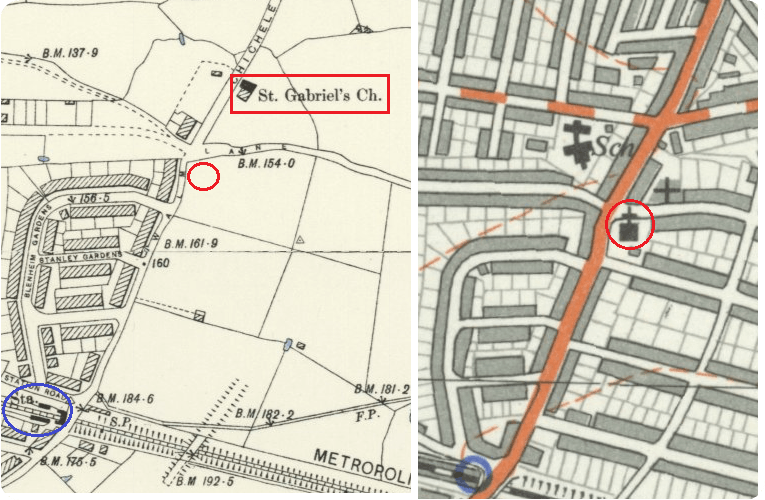
1888 map and 1939 map showing St Gabriel's Church in different locations.
But something wasn't right... the tube station was further away from the church than it should be. Did the tube station change location? That’s impossible. The church was in the wrong place.
The 1888 map showed the church in a different location further along the high road, and not on the corner where the road bends. I decided not to get distracted by pursuing the church changing location and focus on my house. That's a research project for another day.
Step 3: Search by address in the 1939 Register
Using the 1939 Register map, I could see the streets and households listed by address. Finally, I could discover who lived in my house in 1939. This was where I encountered my first obstacle. It turns out that the house didn’t have a number. A bit of digging found it listed as The Vicarage.

1939 Register entry for William I. Bulman, a former occupant of my house. View the full record.
There in beautiful handwriting was William I. Bulman, Clerk in Holy Orders, and his wife Grace. The 1939 Register also shows any wartime occupation and Grace is listed as an Air Raid Ambulance Driver. This wasn't a job I'd have associated with a vicar’s wife until I realised that she was only aged 33, and Rev. Bulman was 38. Not the ageing clergy that I'd expected to find.
Step 4: Search the local newspapers
At this point, I wasn’t sure what to do next as searching by address wasn’t going to get beyond 1939. A colleague suggested I try exploring newspapers and gave me some useful tips about filtering to the relevant region. At first glance, there were a lot of newspaper articles which mention “St Gabriel’s Church” from all over the country.

I filtered for the specific area and looked for articles specifically relating to the vicarage. I couldn't have imagined the stories I was about to uncover.
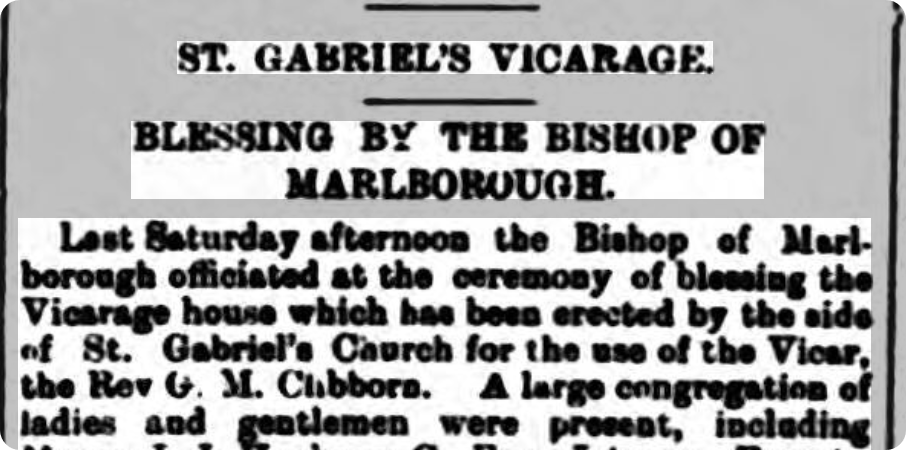
Willesden Chronicle, 8 June 1900. Read the full article.
In June 1900, my house was blessed by the Bishop of Marlborough and a big party was held with the congregation of the church. The newspaper article was detail-rich. It included a long list of names, quotes from the blessing, who stood where and finally ended with;
"“The congregation were afterwards entertained to tea in the new Vicarage.” "
My favourite thing about this newspaper article, aside from the “More tea vicar?” jokes, was that it named the first inhabitant of my house - Rev. G. M. Clibborn in June 1900. But I wanted to know more about this vicar and who else lived with him, so my next step was to look at the 1901 census.
Step 5: Search census records
Finding the first occupant of my house in 1900 was a great victory. It was very likely he would still be living there 9 months later for the 1901 census, and knowing his name would make searching the census records much easier.
Suddenly I went from just one vicar to nine people. The vicar Rev. George Clibborn and his wife Georgie, Georgie’s sister Jane, two servant girls, (one only aged 14) and two little boys listed as visitors.

The single sister-in-law in her mid-40s living with them made sense to me and was common for the time. Interestingly, the sisters were born in India; perhaps the daughters of a missionary?

1901 Census record showing the first occupants of my house. View the full record.
But who are these two young boys with different surnames visiting the vicar? How long were they visiting for? George & Georgie didn’t have children of their own - perhaps they had taken in these two boys? Some side research found that they were from a local family with many children - it's not clear how long they lived with the vicar and his family, but I enjoyed the idea of these two children making the most of my childhood home.
Step 6: Follow new leads
As I viewed the 1901 census record on Findmypast, a handy clue appeared asking me if this was the same person in the 1911 census. Yes, little helpful nudge - it is the same person!
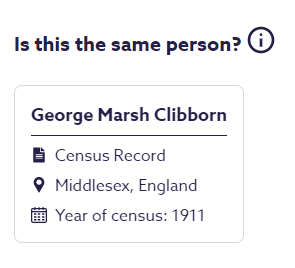
I've found these suggestions very helpful to connect people across records collections, and have used them many times when researching my family history. Of course, it's important to remember that it’s a suggestion and may not always be the correct person.
In 1911, Rev. George and his wife Georgie were still living in my house. The sister-in-law is gone. The two servants have been replaced by a cook and a housemaid - thankfully not as young as the previous ones. And the mysterious little boys? They're back living with their parents locally.
I was pleased to have found a few more names of previous occupants of my house, especially to know that the first occupants were still living there in 1911. But now I had a bit of a gap until the young Rev. Bulman and his ambulance driver wife in 1939.
I wanted to know when George and Georgie moved out. I'm eagerly anticipating the release of the 1921 Census so I can discover if the same people were living in my house after another decade had passed.
Step 7: Collect research onto a family tree
I decided to put what I had found into a family tree to see if I could find anything more about the people who lived in my house. I entered Rev. George Clibborn, his wife Georgie and her sister Jane. I filled in as much information as I could get from the 1901 and 1911 censuses; their names, ages and places of birth.
Soon, family tree hints started appearing and before I knew it, I'd found a missing piece of the puzzle. The will of Rev. George leaving his savings to his wife Georgie. His date of death was June 1912 in Sweden. I was shocked. I hadn’t expected him to die so soon after the 1911 census and what was he doing in Sweden?
Step 8: Dig deeper into newspapers
Now I had a new focus for my newspaper search. I had to know why Rev. George was in Sweden in June 1912 and how he died. The story I uncovered nearly brought me to tears. The beloved vicar was tragically killed in a railway accident while on holiday in Sweden.
The newspapers were filled with an outpouring of sorrow from the community. The holiday to Sweden had been funded by a gift from his parishioners. He and another vicar, a friend from college days, were travelling on the night express train from Malmo to Stockholm when a signalling mistake caused them to collide with a goods train.
The friend survived and sent a telegram to inform Georgie of her husband’s death. Another article revealed the most devastating blow. An inquiry by the Swedish government found that nearly all of the 20 deaths were suffocation by the gas used for lighting the train.
Rev George was brought back to London and had a big funeral. The church was packed and mourners were turned away. The newspaper article covering his funeral even had a photo of him.

1912 newspaper article depicting Rev. George's burial in the vicarage garden. Read the full article.
I went from fascinated to horrified. Is Rev George buried in my garden?! I stared at the grainy photo of the burial looking for distinguishing features, but the wall of ivy behind them wasn’t giving much away.
Surely they wouldn’t have buried their beloved vicar without a headstone? Then a childhood memory of just one headstone in the churchyard came back to me. As children, we found it creepy to have a grave just beyond the fence. The grounds were divided when we bought the house and they split what was originally the vicarage garden into our garden and the church grounds.
Now it all made sense. The church wanted to keep Rev George, their only grave, on their side of the property line. So, yes, he was buried in the vicarage garden… but not the garden where I played as a child. Phew!
With my fears of hidden graves under the grass gone, I could contemplate the tragic accident that took the life of the first occupant of my house over 100 years ago. Mostly I thought of Georgie, his beloved wife now without her husband and, because it was a vicarage, without her home.
Discovering the details of George's death was upsetting. I felt a connection to the first people who lived in my childhood home. George's tragic death felt like a personal loss, even though it was over 100 years ago and nearly 80 years before I would live there.
George’s name appeared one last time in the local papers a few months after his burial in the garden. Announcing the arrival of his replacement, Rev. Gill, who promised to honour Rev. George’s memory and all the great work he had accomplished. And with the announcement, a photo.
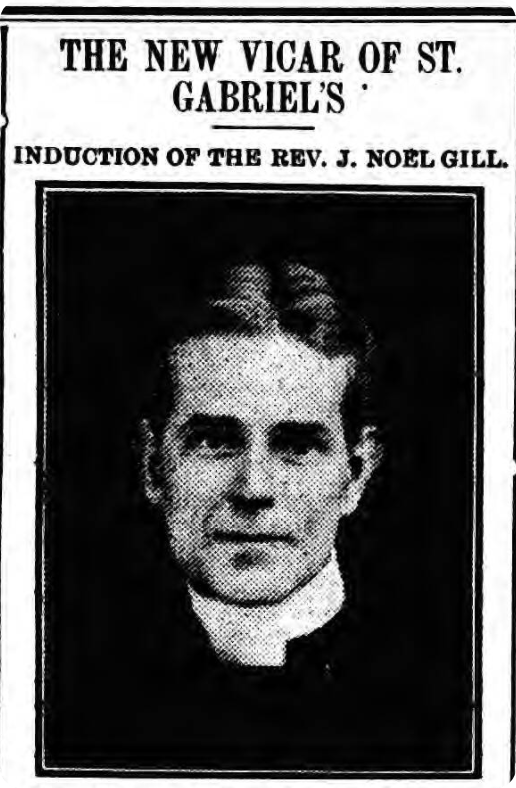
Rev J. Noel Gill in 1912 - the second resident of my house. Read the full article.
Not quite as loveable as George, a much younger and slightly stern-looking man. But I am excited to find out more about him when the 1921 census becomes available.
There wasn’t much about Rev. Gill in the newspapers. The next occurrence of him I found was when he handed over to his successor in 1937, Rev. Bulman. I recognised that name. He was the occupant in the 1939 Register with the ambulance driver wife. So now I could connect the dots from Rev. George Clibborn to Rev. Gill to Rev. Bulman.
Rev. Bulman has lots of coverage in the papers. It seems he liked to complain. My favourite is from 1954 when he moans about couples courting in the church garden after dark and trampling his flowers. My parents can definitely sympathise. Finally, I found his retirement in 1971, after a whopping 34 years living in my house. My family needs just 5 more years to beat his record.
Who lived in my house?
In the '70s and '80s, the church didn't have a permanent vicar so I hit a bit of a brick wall trying to find out who lived in my house before my family arrived in 1990. The house was in a state of disrepair and neglect when we moved in, so I’m expecting it to be short term tenants. Next on my research list are electoral rolls and telephone directories.
For now, I'm delighted to have traced the history of my house across 70 years, three different occupants and their amazing stories. I feel a connection to the people who lived there before me. I would have liked to find more children who grew up in the house as I did. I hope the 1921 census will give me more details about Rev Gill - perhaps there were children in the 35 years he lived there.
I’m looking forward to sharing the history of our house with my parents and siblings. My brothers always claimed the house was haunted… Now I can tell them who the ghost is.
How to find the history of a house
This research process was unique to my house history research, and every journey will be different. I found that using the same techniques as family history worked well but it can be tricky to connect the dots between the residents.
If you want to research the history of your house I would definitely recommend starting with the advice from house historian Melanie Backe-Hansen. For more advice and to share your house history discoveries with us join The Findmypast Forum over on Facebook. You’ll be amazed at what you can discover about your home.
Related articles recommended for you
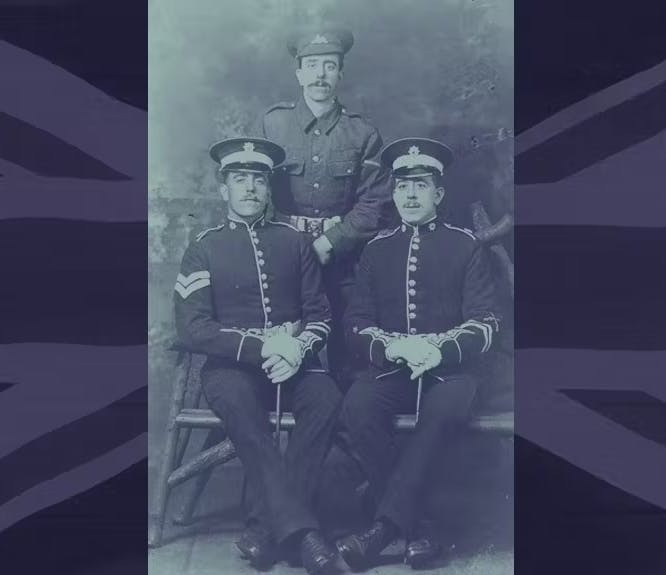
Five must-read books to discover more about the British Army during the First World War
History Hub
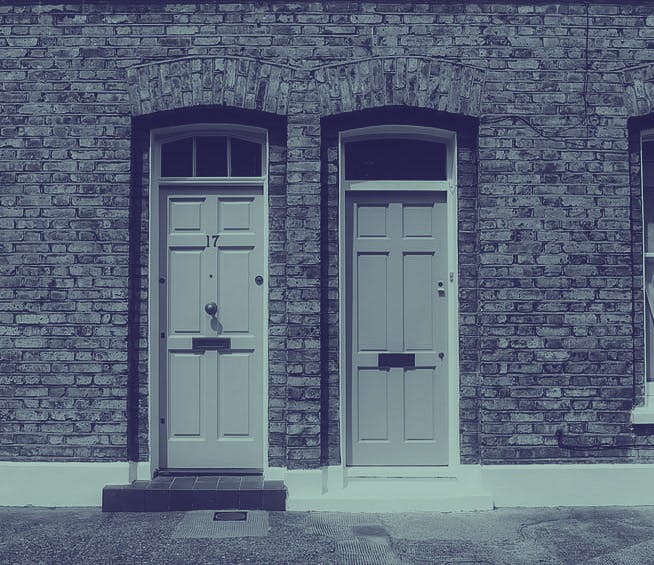
Here's how to overcome nine common house history research challenges: our expert's top tips
Help Hub
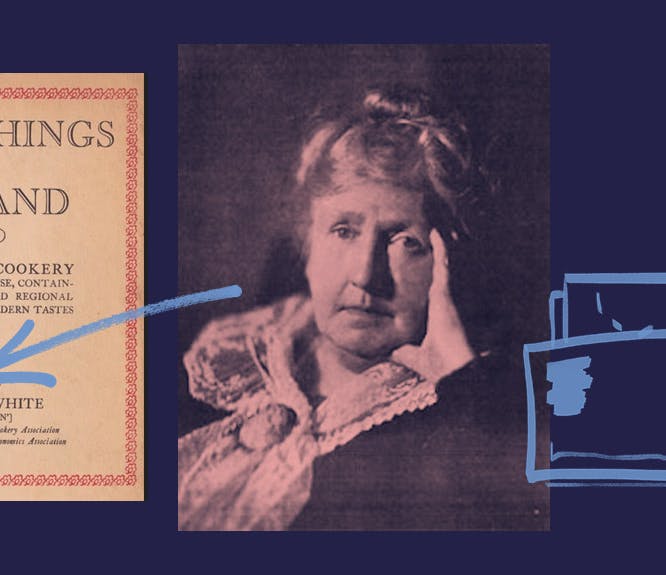
Inspirational women from history: Food Heritage hero Florence White
History Hub

